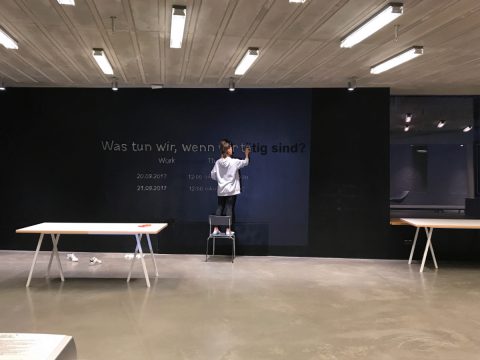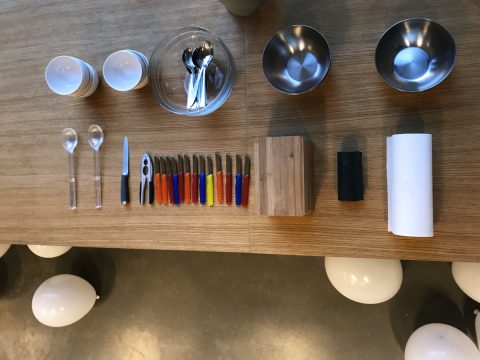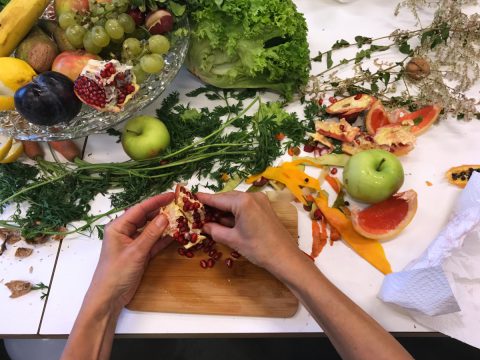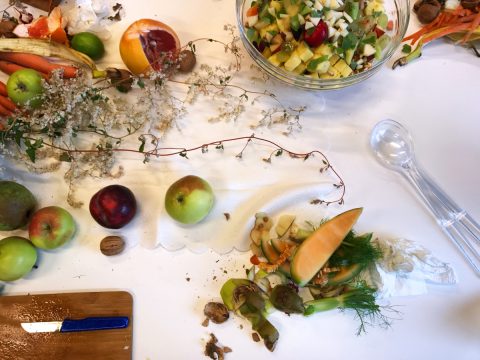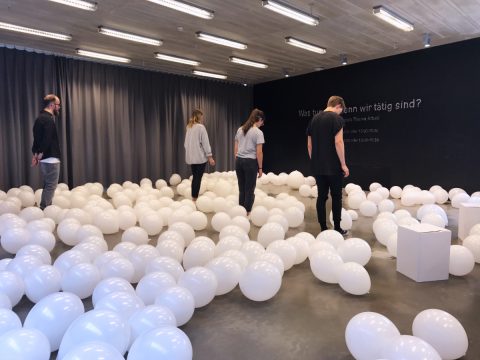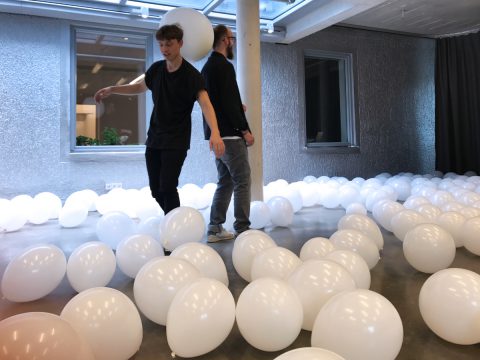“Was tun wir wenn wir tätig sind”
(What do we do when we do things?)
20.-21. September, 2017
This experiment was developed to engage with and to share thinking about work as a relation. At Zeppelin University we invited people to a specific spatial situation. In a two-hour workshop they were asked to listen, to produce, to interact and to experiment with different dimension of work.
How do we engage and deal with theory as a milieu for thinking without theory running the risk of dominating every other form of expression?
In this experiment we used theory to produce a texture that entailed different voices without immediately associating them with the particular name of the theorist or strand of theory.
Having read an extensive amount of theory on work with a specific focus on work as a relation, we developed an affective attitude towards the text by taking quotes that to us condensed the thoughts of the respective author. We did so not only to share the content but also to reveal to each other what matters to each one of us. Instead of rephrasing these authors’ voices, we kept the quotes as thick and intense moments of thought and re-assembled them into a new text.
Thus our own expression is situated in the selection of quotes. This does not mean that we cease to exist as authors. We rather situate our own statement on a formal level of selection and assemblage.
Bringing the quotes into dialogue with one another opens up a space of thinking that goes beyond individual theories. This space of thinking is more ambiguous and multi-layered than the consistency of one theoretical framework alone could offer. Thereby we intended to produce a (theoretical) milieu that allowed listening to different voices, while engaging with other forms of thinking, learning and knowing that involves the body in space.
This performative installation consisted of various layers and media formats. In the following these are addressed separately.
Elements:
Audio-track,
spatial situation,
a set of interactive scores
https://vimeo.com/382821391
Audio-Track
Recording our own voices, we translated the theory-assemblage into an audio that we interweaved with interview footage on three questions: 1) What is work for you? 2) What do you like doing in life? 3) Is there a problem with work?
The 30-minute-long audio could be listened to over headphones. This created an intimate moment between the listener and the theoretical and practical voices that were recorded and allowed each participant to relate to it individually, while being co-present with others.
Spatial arrangement
A room filled with white balloons. In one part of the room is a large table. Placed on the table, one finds a still-life arrangement – flowers, fruits, vegetables.
On a sideboard, close to the table, one finds various instruments for food preparation: knives, big bowls, small bowls, slats, nutcracker, paper-towels.
Hidden in a corner is a stack of white carton stools. To get to the table, one has to wade through the balloons. The balloons move constantly. They seem to constitute little presences that populate the room.
Interactive Scores
The participants are invited to put up the headphones to take a stool, sit on the table and listen to the audio. After some time we distribute the kitchen tools and bit by bit start dissembling the still-life arrangement to prepare a meal. Each participant lingers in the intimate space of individually engaging with the audio. At the same time they work side-by-side to transform the still-life, which also makes tangible the co-presence of others.
For the second part, we asked the participants to forms pairs to perform a set of interactive scores that physically addressed the theme “work as a relation”.
These interactive scores referred to aspects of this theme, such as the co-presence of collaboration and competition, individual and collective decision-making, different ways of resonating with others and negotiation of time and space.
The workshop ended with a reflection over the self-prepared food on the experiences of the last two hours and their relations to the participants’ everyday work-lives.
